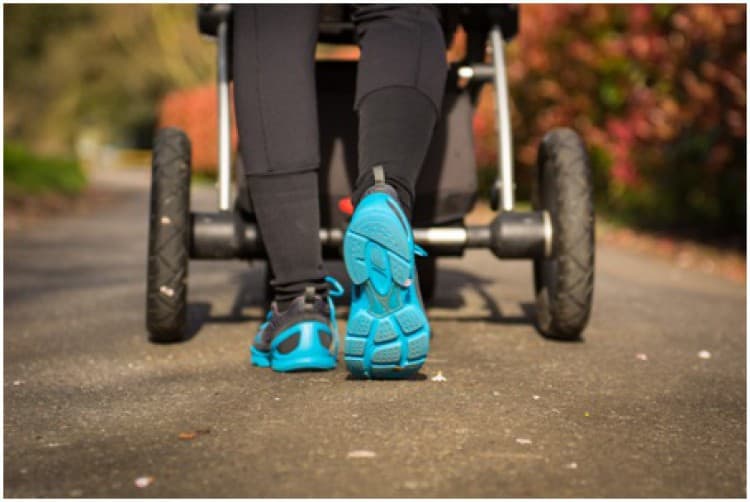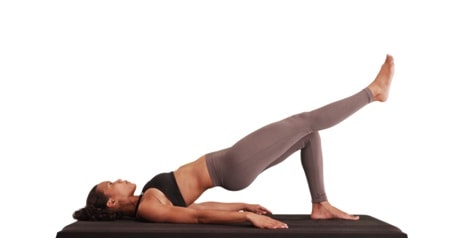
Having a baby is a rewarding milestone in life, but you might be itching to get back in the gym and return to your pre-pregnancy body. It’s often easier and quicker to return your body to normal after pregnancy if you maintained a healthy exercise routine throughout your pregnancy, but during your third trimester, this becomes much more difficult. Your body undergoes many changes when growing a child, so it may take some time before you can return to your regular fitness routine; however, with these tips, you can slowly begin to work out again and you’ll have your body back in no time.
Talk to Your Doctor First
Before even considering an exercise routine post-pregnancy, you need to speak with your healthcare provider. He or she can provide valuable insight into the changes your body is still experiencing and what activities or exercises may still be too dangerous to perform. Initially after childbirth, it’s recommended that you wait until your first check-up appointment to discuss fitness. Before this point, allow your body the time that it needs to heal and recover. Then, ask your doctor specific questions about types of exercises you can handle and how to identify if you’re pushing yourself too hard.
Take it Easy and Start Slowly
Some women are eager to drop those extra pounds gained during pregnancy and may overexert themselves in an attempt to return to normal. This can be dangerous because your body needs time to recover, and you should avoid rapid weight loss. Your pelvic floor, which supports the area beneath your bladder, uterus and bowel, typically weakens from the extra weight and growth of your uterus. This is one area many women focus on strengthening after giving birth, but you need to slowly work your way up to more difficult exercises.
Do not attempt to jump right back into the workout routine you may have maintained prior to becoming pregnant. During pregnancy, your joints and ligaments are often affected and performing strenuous activities like heavy weight lifting can put you at risk for damaging these areas. Take your time. Begin with easy exercises and activities like taking walks or post-natal yoga classes until you begin to feel your strength increase. And, as always, consult your doctor before trying a more difficult workout routine.

Pay Attention to Your Nutrition
The first few months after childbirth are tough between regaining your physical strength and learning how to care for a newborn. Don’t let your health suffer as a result. Continue to eat healthy, focusing on a diet of whole foods—those items that have been minimally processed—and eat often. As you begin to ease back into your workout routine, it’s a great idea to drink protein shakes during the day to keep your protein intake up, fuel your body with energy and support your body during muscle recovery.
Listen to Signs from Your Body
Your body will let you know if you’re overworking yourself too soon. For those who were avid exercisers prior to pregnancy, you may be used to pushing through difficult workouts. But after giving birth, it’s essential not to strain yourself both physically and mentally. Exercise can be a great way to clear your head and help with common issues like postpartum depression, but there is a limit to how much you can do. If you notice that your bleeding is beginning to get heavy again, this is usually a big signal from your body telling you to slow down. Be patient and allow yourself to be in-tune with how you’re feeling.
Wait a Bit Longer if Breastfeeding
If you plan on breastfeeding after birth, it’s recommended that you wait longer to start exercising again. This doesn’t mean that you need to stay in bed. Feel free to begin taking short walks around the neighborhood, but don’t attempt overly strenuous activities like long-distance running or heavy weight lifting. One study found that women who performed intense exercise had fewer immune-boosting ingredients in their breast milk, but those who performed moderate-level exercises had no difference in breast milk composition.
Many women try to up their protein and calorie intake while breastfeeding to replenish those that are lost during exercise. Protein shakes can greatly increase your consumption, keeping your body nourished, which helps provide healthy, nutritious breast milk for your baby.
Test Out Different Exercise Routines and Activities
Because your body has undergone so many drastic changes, you may benefit from different workout routines that you haven’t normally participated in. Swimming is a recommended physical activity post-pregnancy because it is gentle on your joints and encourages a full-body workout. Post-natal yoga is another popular activity because it promotes flexibility and strength and incorporates easy movements.
Drink a Lot of Water
Water is essential to any active person, but for women who have just given birth, it is even more important. Water allows our bodies to perform at optimal levels, helping to protect our joints, provide energy and replace water lost via sweat. Even if you’re just talking a walk, don’t forget to bring a water bottle along with you.

Exercise Your Pelvic Floor
Your pelvic floor is one of the areas most affected by pregnancy and childbirth, and you’ll want to slowly work on re-strengthening this area. However, you should implement these exercises very slowly and as your body permits. A weakened pelvic floor often leads to bladder leaks in women who have recently had a child, but even if you don’t experience this common yet frustrating side effect, you should work to rebuild these muscles. Kegels are a common exercise to help strengthen the pelvic floor, but you can also work on other exercises like hip lifts and core workouts.
Work Your Abdominal Muscles Slowly
During pregnancy, your abdominal muscles are stretched and sometimes may even become separated. There are ways to regain your previous core strength, but you should implement these exercises slowly as your abs need time to rebuild. Many women notice lower back pain after giving birth and easy core workouts can be one way to overcome this discomfort. Speak with your doctor before beginning any type of core routine
